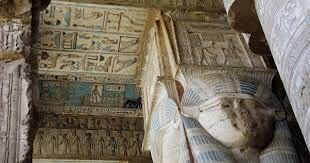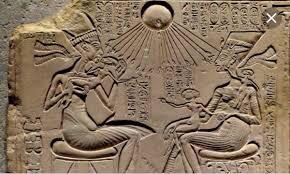By Hossam Zidan
The ancient Egyptians excelled in observing celestial bodies such as the sun, moon, stars, and even several planets. This mastery is documented on numerous temple walls and tombs. According to the prominent tour guide and historian Bassam El Shammaa, astronomy played a crucial role in the daily, religious, and economic lives of ancient Egyptians.
The Dictionary of Ancient Egypt states that since at least the Middle Kingdom, around 4,000 years ago, the ancient Egyptians identified five planets, depicting them as deities sailing across the sky in boats. These “wandering stars” included Jupiter, which the Egyptians called “Her,” meaning “Horus who governs the two lands.” This may refer to Upper and Lower Egypt, and Jupiter, the largest planet in the solar system, was well-known to ancient astronomers. The Romans later called it “Jupiter,” the god of the sky and lightning.

The Egyptians also recognized Mars, calling it “Her Djesher,” or “Horus the Red,” which is fascinating considering that Mars is still known today as the Red Planet in the West. How the Egyptians discerned the true color of the planet is a remarkable feat.
They identified Mercury, which they named Sebegu, a deity associated with the god Set, the brother of Isis, Osiris, and Nephthys. Saturn was also known to the ancient Egyptians, who called it “Horus the Bull of the Sky.” Venus was referred to as the “Morning Star” or the “Deity of the Dawn,” now famously known as Venus.
El Shammaa notes that the ancient Egyptians were also aware of solar eclipses. In the Neferty Papyrus, housed in Saint Petersburg, there is a clear reference to a total solar eclipse. The papyrus describes the event, stating: “The sun is obscured, giving no light that men can see,” likely referring to humans. Another line reads: “Man cannot live when stormy clouds hover,” referring to rain-laden clouds, and expresses wonder at the disappearance of the sun.
In his book Ancient Egyptian Language, renowned Egyptologist Dr. Abdel Halim Nour El-Din mentions hieroglyphic symbols depicting a half-shadowed moon, along with the moon god Iah, the crescent moon symbol, and “Sba,” the star. He also notes symbols for “Wnwt” (hour), “Hrw” (day), “Abd” (month), and “Akh” (sunlight), as well as the hieroglyph for darkness, “Kkw.” These symbols further demonstrate the ancient Egyptians’ remarkable expertise in astronomy and their deep understanding of outer space, the planets, and the solar system.








































admin in: How the Muslim Brotherhood betrayed Saudi Arabia?
Great article with insight ...
https://www.viagrapascherfr.com/achat-sildenafil-pfizer-tarif/ in: Cross-region cooperation between anti-terrorism agencies needed
Hello there, just became aware of your blog through Google, and found ...